The three traits (DPD) of mastering art skills
Why is it that many adults find it hard to draw!
Drawing is a much loved hobby throughout the world and enjoyed by many at any age, young or old.
Sadly, many miss out on this intensely gratifying pastime, thinking that you have either got it or you haven’t.
Many adults reflect back to their childhood days in school, and have seen a handful of students who excelled in art such as painting or drawing. Since they were not able to match or get close to their levels, they simply formulated a reason for this, they all were gifted or had a hidden talent.
This was the best way to provide an explanation to their own shortcomings in doing art.
The subject of drawing will always take a backseat and it becomes a distant memory as they get older.

Excuse after excuse for not being able to draw!
Let me give you my thoughts, based on experience as a teacher and an artist who has been immersed in art for over two decades. Firstly, it is a complete myth to assume that people who draw are somehow gifted, and you should not believe it. To clear these confusions, it is better for you to understand the real reasons why many do not or cannot draw.
I will provide my findings on the subject of drawing, which has stretched for many years. In a nutshell, the fact that you could not match your skills to the good students in art was not due to their inert talent, but due to your own lack of understanding behind the process of drawing and painting.
Most people that embark on any skill, usually have a desire to improve, and all possess common traits that propel them in the right direction. I call this the DPD of mastering skills. Depending on where you are on this scale, you could potentially dropout before acquiring the full DPD mindset.
- Desire to learn and improve
- Passion in the subject
- Dedicated and committed
Notice there is no such thing as being gifted or having a natural talent in any of these three listed traits.
Those three innate qualities are actually all that’s needed to drive anyone who has the desire to succeed in drawing. In actual fact, the DPD reasoning can be used for any type of skills that one wants to master.

Think back to your youthful days, do you remember when you looked at some of the drawings made by the good students and how you felt. You were probably comparing yourself to those students and thinking how abysmally bad you were compared to them. This could potentially throw most people off from pursuing drawing altogether and many do so.
Did you ever ask them or even observe these particularly ‘gifted’ children and why they were so good or even find out how they went about it. You most likely did not have any idea, because you inadvertently assumed that it was down to natural talent which you had none. You were probably skirting around this issue and you were no where near the vicinity of entering the DPD zones.
Had you asked them the right questions (which shows interest), you would have arrived at some of the three traits that make up a good artist. You would then be in a better position to conclude that anyone could potentially reach high levels by staying with these three traits.
The good art students were not gifted with the natural talent in the beginning, but possessed the interest, desire and long term commitment when it came to drawing.
If you look at other subjects other than drawings, for example, Maths, Sciences, History or Geography, you will automatically find that the students good in these subjects always possessed an interest in the subjects. They also had the desire to improve. It may not be obvious to you, but rest assured their thinking spans far beyond their exterior front.
They all had the deep desire to learn and improve. They knew that it would lead them to a better understanding of the subject and take them to a level beyond their own initial understanding.
They also take an intense interest in the subject which automatically brings about the third point of the three traits, being dedicated and committed.
It is then, that drawing will become natural to them and also the reason why many assume that they are somehow gifted.
To get to the third stage of the DPD requires that you possess the first two traits and have got into the swing of things. This means not tentatively but with real intent and purpose in mind.
If you reach the third level of the DPD, the act of drawing would not seem like work at all, but pleasurable and very rewarding at the same time. Many will be stuck on one and two and their hesitancy and doubt will always prevail. They will always be at the junction of either continuing or giving up altogether. Sadly many will not go past the first step and more will fail in the second step.
I have contributed a considerable amount of time on the Quora platform teaching, advising and training other people on the subject of art.
I have also spent a great deal of time with people who are on the sidelines about art and can’t decide whether one needs to be born gifted or to give it a try themselves.
Eventually, answering the latter questions became very tiresome for me, because they all belonged to the group that will have self doubts and never inch forward. They are usually looking for excuses to be in the strata of thinking they are buried in, and not be able to draw. Although they have a deep inkling of interest in that subject.
As you can see from my explanation it does not make sense to encourage people who will not strive for any of the points in DPD. It requires people to enter the DPDs with an open mind in order to work their way through.
You can read many of my Quora questions and answers on the subject of drawings from the image link above.
You should now have a better idea of what I’m trying to drive at.
One needs to remove all skepticism, doubt or hesitancy when it comes to drawing and then they can step into the first point of DPD.
After all, if you haven’t drawn before, are you really qualified to judge who can and cannot draw?
Once you’ve gotten over the first hurdle of doubt and prejudice of drawing, you will be like a sponge ready to absorb all information related to the creation of art. You will seek advice from experts, watch YouTube channels and turn to lots of information on drawing and painting.
You won’t be looking for excuses anymore but propelling yourself in the direction of DPD.
You will find that as you embark on this journey, you will continue to push through the DPDs.
This is the passion for the subject you need to keep learning. If you have come this far, you will find that your mind will automatically attract the world of drawing and painting that propels you even further.
It’s an unstoppable force that takes you to the final stages of the DPD which is an uncompromising dedication and commitment to the hobby. The person who is in the third stage of the DPD, won’t see dedication or commitment as overbearing work like a person from outside looking at this person.
Work to them, will not seem like work at all, but pure enjoyment and delight.
You don’t have to take my word for this, you must have come across people who are so dedicated and committed to their interest and passion, they can easily burn the midnight oil without a sweat. They become so impassioned in their field, they derive the same pleasure and enjoyment as eating their favorite food.
You will find yourself putting in countless hours without even thinking about and it will not seem like work at all. I have taken this approach to tackling many other skill sets that I did not originally possess and taken it to great heights. For example my poetry and writing. Oddly enough this came about only in the last year and much later in life that I could have possibly imagined.
Once you find yourself embedded in the DPDs, you will be unstoppable, everything will just carry you forward with relative ease. It is your entire dedication and contribution to art that will separate you from the rest of the crowd. You can now take your new skill sets to the stratosphere and the only shortcomings to your success, will be your own imagination and creativity!
In my years of painting and drawing, I have never felt the need to make art as my sole career. I was an entrepreneur at heart and anything I undertook was with the aim of making the ‘world’ an easier and a better place to live.
I applied the same methodology when it came to my skill sets that I possessed and surpassed many others. This was the desire to promote and share with the rest of the world.
My mindset is different from other people. I love the enjoyment of drawing and painting but I’m more interested in helping others to acquire these skills too.
As I turned to the digital world of drawing, it became very apparent that it was missing critical components of art which have existed in the traditional mediums for centuries.
The fact that others do not get it, compelled me to build an app that I call Paintology. The link below will take you to the app available on the Google play store.

I wanted to help others to get over the hesitancy of drawing and learn from the fun tutorials provided on Paintology so they can develop their skills by doing fun and engaging drawings.
You can now enjoy the enormous satisfaction gained from painting and drawing and the benefits it can bring to your own life.
Now that we have social media where people are mainly consuming information, wouldn’t it be nice to do something that is more creative.
This spurred me to think about different ways that drawing and painting could be made fun and interesting while at the same time they are developing their core art skills. Learning the core skills of art can be challenging to many, but with the digital medium, it is made much easier.
I am happy to say that I have succeeded in this venture with the Paintology drawing app.
The digital medium is an exciting art platform that is versatile and powerful for teaching students to draw. However, the app needed to be designed as such.
Many drawings by other apps showcase the good artworks by proficient artists, which does not really teach the process of drawing. The Paintology app changes all of this.
The Paintology app has been designed from the bottom up to teach others how to draw and paint well through many various types of tutorials. This approach is different to all the other apps which focus on tools over teaching the core methods of drawing and painting.
I will explain more of the thinking and the process behind Paintology so you can truly appreciate where I am coming from.
The well known saying, don’t judge a book by its cover, applies well to the Paintology app.
Many beginners of digital art judge an app by the number of tools rather than the whole process of drawing and painting. They mistakenly think that the tools will make them competent artists. The creative process of art has little to do with the tools but in the process of creation.
Take for example the works of Van Gogh or Monet, most people will be awed by the creative genius of these finished paintings. They will rarely ask the question of the mediums used in their paintings, it will almost always be an afterthought.
So why should tools on digital apps be the dominant driving force in the creative art process.
It should not be, and most beginners mistakenly put too much emphasis on the tools rather than giving themselves the time to understand the whole process of creating art.
I explain the thinking behind this in my previous article provided below.
It is no wonder that many people who make up the major crop of digital artists are actually attracted by apps with the most tools. As a result, they go about the creative process of art defined by the tools rather than mastering the core skills as defined by the fundamentals of art.
I explain the fundamentals of art, which you can find on the Quora link provided above.
In the same way that a good carpenter is not defined by their tools, the same is true of a good artist. Does it not make sense that the skills that are possessed by a good carpenter or an artist should be the principle focus for anyone who wants to become a good carpenter or an artist.
Unfortunately, these same groups of people, which are in the majority, will follow the rest of the crowd. The methods deployed are that the tools will achieve quick gratifying steps to creating digital art. It then becomes a skill of attaining technical proficiency in the use of many digital tools. It is also the reason why the distinction between digital and traditional becomes more divided when it should be recognized as being the same.
In the digital world of drawing, the methods that are known to all are the myriad of digital tools to fulfill the artistic void that is common in the traditional mediums. It is the fastest and quickest method to drawing for many but sadly results in many users becoming highly dependent on the digital tools and overlooking their core art skills.
The majority of people install the app and judge the merits of the app entirely based on the tools it possesses. This is similar to people raving over the pens, pastels, acrylics or oils, instead of the techniques and the whole process of drawing and painting. You rarely find a student of traditional mediums such as pencil drawing, jump into drawing, just because they found others talking about some pencils.
What they are missing is that they don’t have any of the core art skills of traditional mediums but there are many tools to fulfill this deficiency.
This is a sad case of affairs and means that much of the digital artwork is governed by the set of tools that users use and will never appear natural like traditional mediums. In addition, they will forgo their true understanding of the nature of art and become heavily reliant on the toolsets.
Watch the video below to find out why tools can get in the way of making good drawings.
Paintology goes far beyond the digital apps of today and tackles the most overlooked traits that exist in all art mediums. These are the fundamental core skills of art that are necessary for artists to make their creations come alive.
Granted, that many are able to produce digital art to replace those core skills, their artwork will nevertheless be dictated by the limitations of the tools themselves. In the fundamental core skills, the artist’s limitations are on himself or herself. The tools do not restrict their movement on how they will go about their art creations. They are the masters of the tools and will wring every inch and thread out of their toolsets to bring their creations alive. Many will continue their path in digital art that tries to mimic reality but one will always be able to separate digital art from traditional art.
To further expand on what I am talking about, you need to look at the whole subject of painting and drawing that originated with traditional materials such as pencils, pens, brushes, oils, watercolors and pastels.
It is best to start from humble beginnings, the pencil and paper.
With these simple tools alone, and in the right hands one can make a beautiful drawing whereas in the hands of a beginner, it would look like the work of a young child.
You can ask yourself why that is. After all it’s just a simple pencil and paper.
The reason for this is that the artist has understood and mastered the properties of the pencil and how it interacts with the paper.
They have learnt the nature of the pencil and how the dark and light tones can be obtained with sufficient practice.
With these skills they’re able to turn it to their advantage to any kind of drawings and make it look two dimensional rather than a flat one dimensional drawing.
The artist has used their intimate knowledge and understanding by practicing with the tools and applied it effectively to their drawings.
So the first step to becoming good at drawing means you need to keep your mind open to the way a specific tool or brush operates. You can simply make marks with the paper and run ahead of yourself and become disgruntled with your performance and give up. Many people will fall into this category without giving themselves a chance.
Do not think for a moment that this pencil produces marks of one kind and nothing more. If you do, you will block yourself to the potential of this pencil’s capabilities and any other tools for that matter.
Many miss this important point and assume there is nothin further to learning with the tool. They make a few marks and hunt for answers when it is lying right under their nose.
You will find yourself in a quagmire and will simply give up by reassuring yourself that you don’t have those ‘hidden’ skills. This statement may be true, but you should not excuse it as a gift that others possess and you do not, because the answers were always right under your nose!

I will provide an example through a drawing I made with the Paintology app.
A proficient artist in the traditional medium knows that with the pencil and the right pressure and strokes, he/she could stretch the tones required in a good drawing.
Tones, in case you didn’t know, is one of the most fundamental core skills taught in all art classes. These are the values of gray tones or color tones that gives rise to depth in any drawings.
With the right pressure, and using various techniques of blending using a paper stump etc., they can make impressive drawings compared to others who are not versed in the use of the tools.
Most people who learn to draw would stop at the part where the pencil simply makes a mark on the paper and nothing more. They will not push their understanding of the pencil and what more could be achieved with it. Unless the art teacher effectively guides the student to mention these salient points, most will simply overlook these.
I reiterate these points, because it is one of the biggest deficiencies found in beginners who are often looking for a quick fix.
This brings me to the first point of the DPD traits, that I mentioned previously. An intense interest on the part of the student will build their curiosity and pave the way for getting those answers related to the pencil and paper.
Their personal interest and careful observation of the pencil and paper will allow them to develop the skills of achieving various tones on the paper.
In addition, they will improve their drawing strokes as they continue to practice. A proficient artist will be better at drawing a neat circle compared to a beginner.
The student who stops at the part where the pencil can do no more than the simple marks on paper will be closed to any further advances. They will fall into the trap of assuming that they have no hidden talent and dismiss themselves as being incapable of drawing which requires ‘hidden’ talent.
There may be other reasons also for their lack of tenacity and this may be due to their history of taking up new skills, where they always expected to fail. This could manifest towards a ‘lazy’ mind where they do not allow themselves to venture into new territories due to fear etc. There could be many psychological reasons for this but this does not detract from the DPD traits one needs to acquire to get over the hurdle of drawing.

Let’s take the similar example of the pencil and paper and use the shade brush of the Paintology app. This brush has very similar properties to a pencil where you can build up tones by going over it again and again.
I quickly realized that one can take the basic foundational knowledge and transfer it to the digital domain.
I have provided a simple 10-day shading exercise that you can follow along to make good pencil drawings right on your phone.
The truth is going to further astonish you as it was done on a phone around six inches big and drawn with one brush of the pentology doing up.
Drawing with the phone or a tablet is very versatile compared to traditional mediums.
The six inch phone is equivalent to an A4 or letter size paper due to the zoom feature of the Paintology app.
Is also a lot faster, due to the undo tools and thus makes learning to draw a breeze.
It is also highly versatile since you can save your drawings and most have their phone in their possession. You won’t have any excuses with regards to not having the time or materials handy for drawing now!
If you are serious about improving your drawing, using Paintology will help you get there faster than you could achieve pencil and paper. To get into this much loved hobby of drawing, all you need is your phone and the Paintology drawing app from the Google play store. The app is currently available for the Android devices on the Google Play store but I hope to bring an Apple version out soon.
If you have always wanted to learn to draw, and enjoyed the traditional modes of drawing, Paintology is just right for you.
You can see all the hundreds of videos on the Paintology YouTube channels (resources at the end of this post). If you are really interested in learning to draw more rapidly than other ways, then this approach would be the best way forwards.
A brief description of the Paintology app
Paintology as a unique way of teaching you how to draw. You go to the tutorials section from the home screen and then to the tutorials under the categories such as Paint by Numbers, Pencil Drawing, Trace Drawing and more.
You will find many tutorials that come with a video made specifically for the tutorial that you are doing. The app will allow you to switch from the video to your drawing canvas so you can follow along to the video provided by the teacher. This step by step manner of watching and drawing is extremely powerful as it shows you the process of drawing and painting. It is the very thing that I had mentioned earlier which prevent many adults from pursuing drawing but Paintology has made it easier.
Also, it is easy to overlook all of these tutorials as simple exercises, they are not. They have been crafted to help you with specific skills or the core skills in drawing and painting.
Some examples include:
- Paint by Numbers – Improving drawing strokes
- Trace Drawing – Helps you improve shapes, form and accuracy in drawing
- Overlay Drawing – Partial completion of a drawing that you can finish
- Block Coloring – An extension of Paint by Numbers, unique to Paintology
- Other categories – Portraits, Landscapes, Advanced, Beginner, Kids and more
I hope I have provided you with some insight into the subject of learning to draw which many still have confusing and conflicting views.
If you want to contact me, you can go to the Quora Paintology space (link in the resources), I will be happy to answer your questions.
Here are additional reading resources that will give more insight into the core skills of art related to digital drawing and painting.
Paintology Resources:
Paintology app link:
https://play.google.com/store/apps/details?id=com.paintology.lite
Website:
https://www.paintology.com
YouTube:
https://www.youtube.com/c/Ferdouse
https://www.youtube.com/c/Paintology
Free Paintology Online Classes:
https://forms.gle/ozsKJGYPZ9X8F5YX8
https://www.udemy.com/courses/search/?p=2&q=paintology&src=ukw
Quora:
https://paintology.quora.com
https://www.quora.com/profile/Ferdouse-Khaleque
Others:
https://medium.com/@ferdousekhaleque
https://www.tiktok.com/@paintology3
https://www.pinterest.com/FerdouseKhaleque/
https://www.pinterest.com/Paintology
https://www.patreon.com/paintology
Paintology – Bringing back the fun of the real thing!
Happy Drawing & Painting!
#portraitdrawing #shading #drawlips #tones #pencildrawing #paintbynumber #graytones #paintology #learndrawing #drawingapp


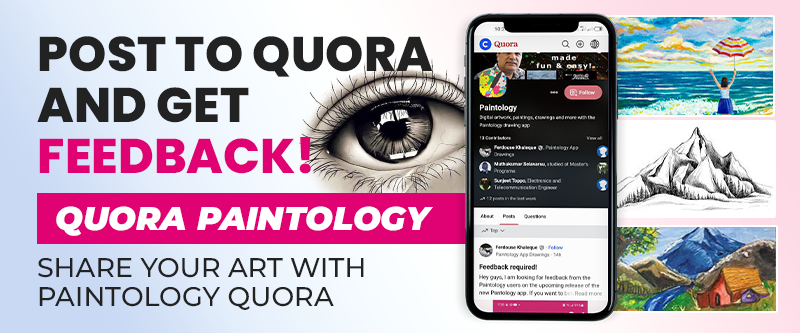



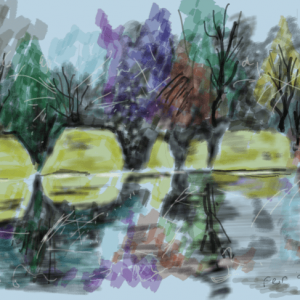

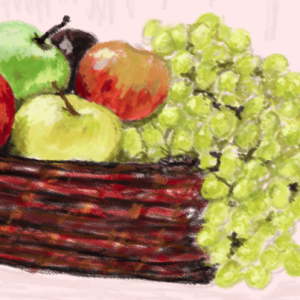


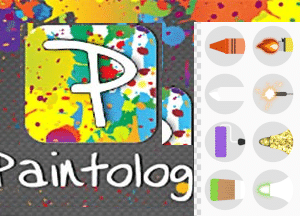
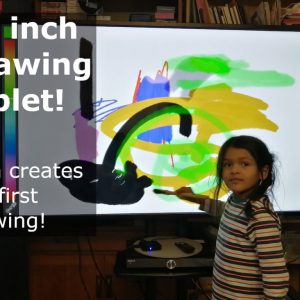
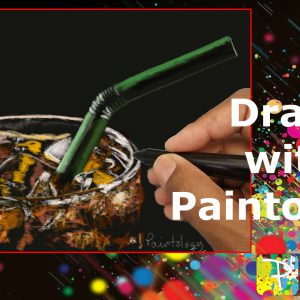

 Digital Canvas
Digital Canvas
Leave a Reply